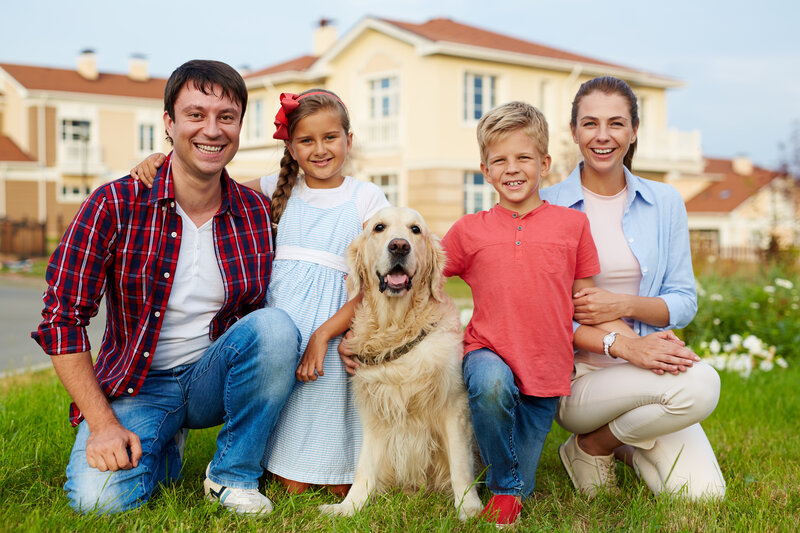
Bringing a new dog or puppy into your home or apartment is an exciting time. However, it also requires planning and preparation to ensure the transition is smooth for everyone. The more prepared future dog companions are, the most positive the experience will be.
I’ve put together a list of steps that can help you prepare for your new canine addition and some insider tips on what to expect.
Physical attraction to specific breeds is understandable, but that is by no means the best way to bring a dog into your home. Looks do not matter when it comes to a dog, but temperament and energy levels do!
Think about your household rhythm, activity level, needs, etc., and then learn about the dog breeds that make the most sense for you.
I recommend starting with the AKC’s Breed Selector tool. Even if you plan to adopt a mixed-breed dog from a shelter, the results of this quiz can help you and the shelter staff to select a dog that meets the recommendations.
Puppies have very different needs than adult dogs regarding potty training, play, and exercise. This is another thing to consider when getting a new dog.
If you’re a first-time dog companion or you don’t have a tremendous amount of time and patience right now, I recommend resisting the urge to get a puppy and opt to adopt an adolescent or adult dog instead. Training is typically much faster and easier, especially potty training when a dog is a little older.
You’ll need to decide where:
If this is your first time having a dog, I recommend meeting with a professional dog trainer ahead of time to walk your home with you, discuss your plans, and help you get set up and prepared for what is ahead.
As mentioned above, a potty training location and plan is a must, but you also need to know how to respond when accidents occur.
First, read our post, Bell-Training: How to Potty Train Dogs Using a Bell. There, we emphasize it can take four to six months to completely potty train a dog and that you should never punish a dog for accidents. The best way to expedite potty training is to observe your dog and learn their cues that “it’s time to go.” Setting an age/size-relevant timer is also helpful since small dogs and puppies need to go more frequently than adult dogs or larger breeds.
Plan for accidents and have high-quality stain/odor removers and cleaning supplies at the ready. I’m a fan of Nature’s Miracle or other enzyme-based products that are safe for pets and the environment while doing a fabulous job at removing odors and stains.
When you bring your dog home, exit the car, put the dog on a leash, and walk them around the neighboring blocks. This allows the dog to get out excess energy, calm down, and familiarize the senses with the new sights and sounds of “home.” If a dog seems anxious, is being destructive, or is barking or whining excessively, set out on another walk. Regular exercise is essential for all dogs, but that’s especially true for nervous or anxious dogs adjusting to their new “pack” and environment.
If you’re bringing a puppy home, take them to the back yard or established potty area and let the puppy sniff, romp, and go before entering the house. Puppies aren’t good leash walkers, so the energy needs to be spent via lots of playtimes. Plan to interact quite a bit with your pup physically, playing fetch, getting on all fours if possible, and wrestling or playing as their puppy siblings would, etc.
If you have the space in your yard, consider building a basic agility training course - which is an excellent way to play, exercise, and bond with your dog. Regardless of what you decide to do (walk, hike, run, play), your dog must exercise daily. Unexercised dogs are less healthy, more prone to behavior issues, and harder to train because they have nowhere to put all their pent-up energy.
Dog training requires a calm spirit, consistency, and simplicity. Without those three, it becomes confusing for dogs and their human companions.
The best way to familiarize yourself with sound dog training methods is to work with a trainer. As mentioned above, this can be done by having a trainer come to your home. A one-time home session may be all you need to get started and thrive.
Dog training classes are also a fun way to learn training techniques while simultaneously socializing your dog and connecting with other dog owners in the community. Finally, there are “Doggy Boot Camp” options where your dog lives with the dog trainer and the pack for a predetermined length of time. Upon the dog’s return, and with your diligent consistency, the dog is “trained” for you, and you can continue consistently from there.
Knowing what to expect and preparing for it is the best way to smooth the transition after your new dog arrives. Would you like additional support or information on how to work with current challenges with your new dog or longstanding canine compassion? Contact Alternative Canine Training, and let’s chat.